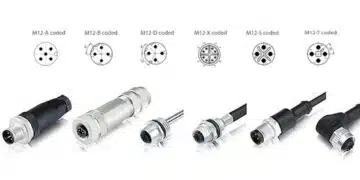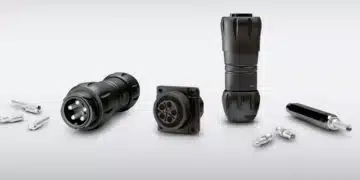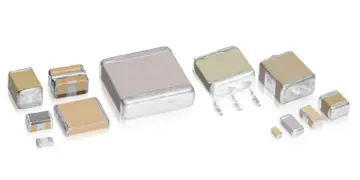The paper “Muratas Silicon Capacitors: Reliable Performance in Extreme Conditions” was presented by Enzo Darcy, Caen, France at the 5th PCNS Passive Components Networking Symposium 9-12th September 2025, Seville, Spain as paper No. 1.3.
Introduction
Murata’s silicon capacitors have emerged as a reliable solution for applications operating in the harshest conditions, from deep space missions to cryogenic environments. Their design leverages Passive Integration Connecting Substrate (PICS) technology, enabling ultra-miniaturization, exceptional stability, and high reliability. Unlike conventional Multi-Layer Ceramic Capacitors (MLCCs), Murata’s devices maintain performance across extreme temperatures, under radiation exposure, and during mechanical stress.
Key Points
- Wide Temperature Range: Operate reliably from -250 °C to +300 °C.
- Miniaturization and Weight Savings: Significantly smaller and lighter than MLCCs.
- High-Frequency Performance: Low ESR, low ESL, and high capacitance density support applications up to 220 GHz.
- Exceptional Reliability: No voltage derating required, with lifetimes exceeding 50 years at 250 °C.
- Radiation and Shock Resistance: Withstand heavy ions and total ionizing dose without performance loss.
Extended Summary
Murata silicon capacitors are built using PICS technology, enabling integration of high-density capacitors with superior thermal and electrical stability. The technology allows for ultra-deep trench structures and Metal-Insulator-Metal (MIM) or trench Metal-Oxide-Semiconductor (MOS) capacitor formation, facilitating miniaturization without sacrificing performance.
When compared to MLCCs, Murata capacitors exhibit clear advantages in environments requiring extreme reliability. MLCC performance drops significantly above 125 °C to 150 °C, often requiring voltage derating, which increases size and weight. Murata’s capacitors, on the other hand, maintain stable capacitance and low leakage currents even at 300 °C, with insulation resistance two orders of magnitude higher than standard NPO/COG dielectrics. This makes them particularly valuable in aerospace and industrial applications where miniaturization and long-term reliability are critical.
High-frequency applications benefit from Murata’s extremely low parasitic elements. The eXtrem-Broadband X2SC series, for example, provides 10 nF in a 0.6 × 0.3 mm package, with ESR below 220 mΩ and ESL below 20 pH. Such characteristics ensure strong signal integrity for devices operating up to 220 GHz.
Environmental robustness is a defining strength. Murata capacitors withstand rigorous thermal cycling (300 cycles from -65 °C to +200 °C) and mechanical stress tests without electrical degradation. They also exhibit excellent radiation tolerance, surviving heavy-ion exposure up to 62.5 MeV·cm²/mg and total doses around 293 krad without failures. This resilience makes them suitable for space missions, cryogenic experiments, and geothermal drilling systems.
In terms of longevity, Time-Dependent Dielectric Breakdown (TDDB) testing indicates that Murata capacitors can operate for over 50 years at 250 °C under 10 V, far surpassing MLCCs, which often fail within a year under far less extreme conditions.
Conclusion
Murata’s silicon capacitors set a new benchmark for high-reliability passive components, excelling in thermal stability, radiation resistance, lifetime, and miniaturization. Their performance makes them a superior alternative to traditional MLCCs in aerospace, cryogenic, and high-frequency applications. By combining extreme environmental resilience with compact form factors, Murata capacitors enable next-generation electronic systems designed for the most demanding operational scenarios.































